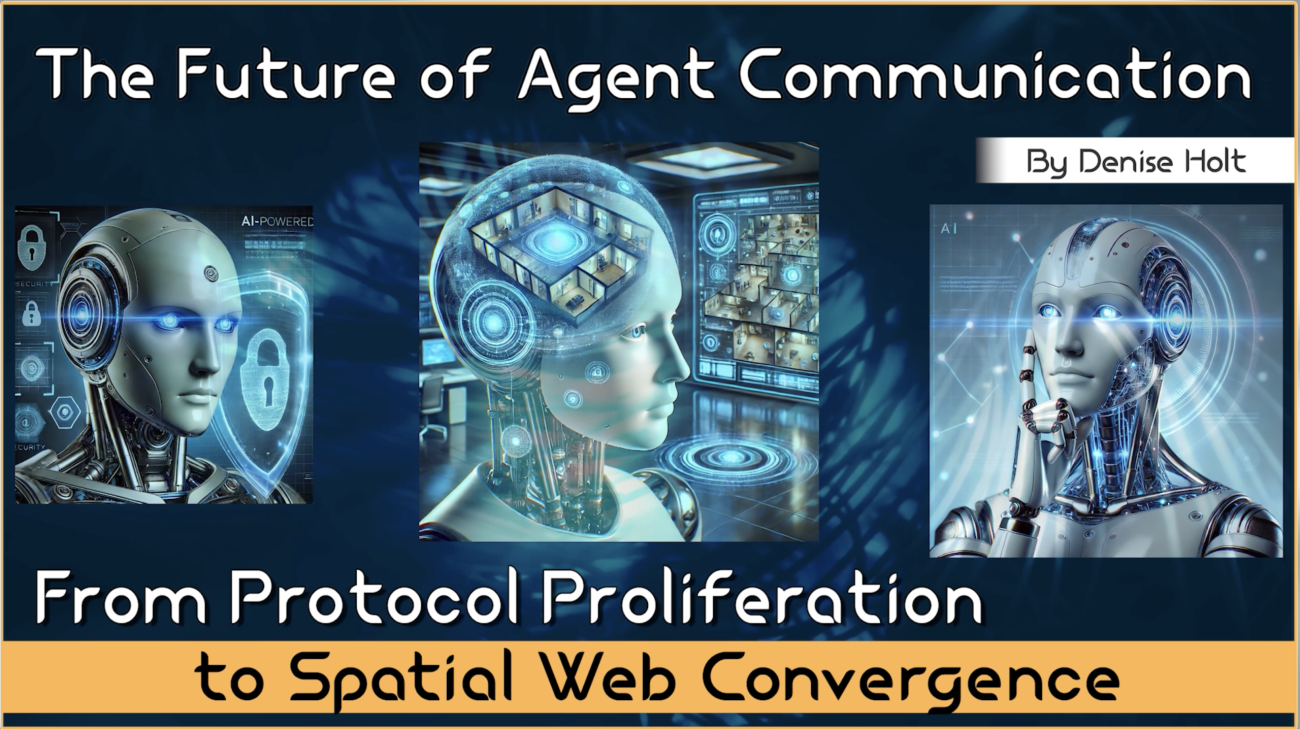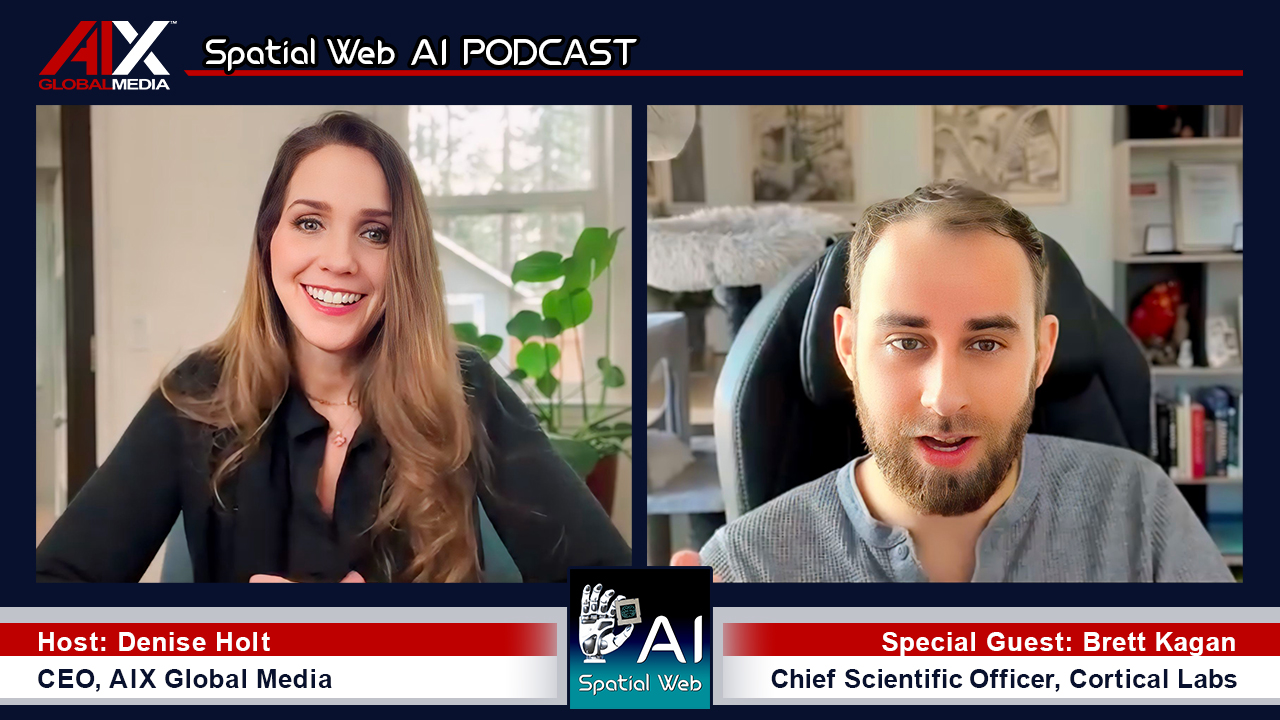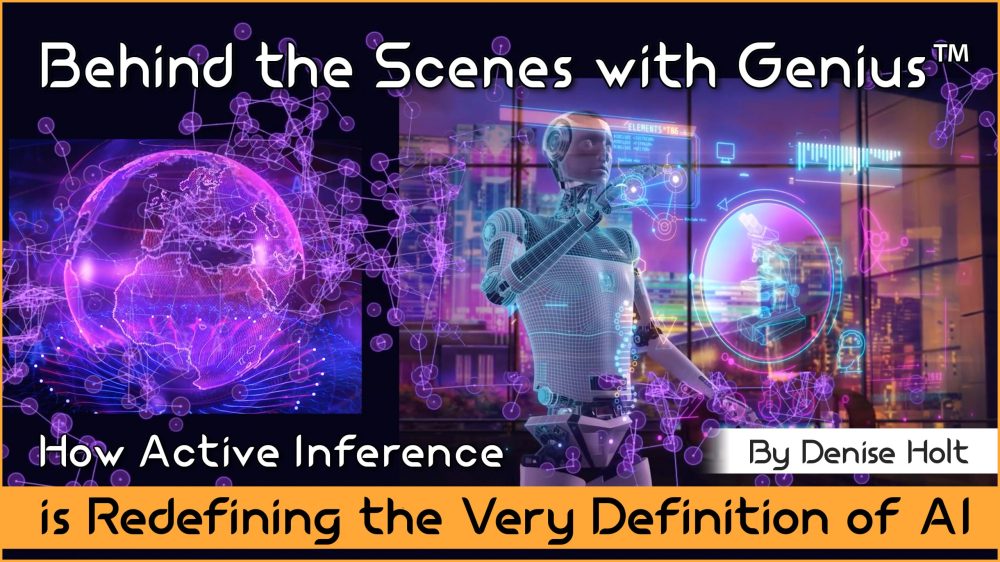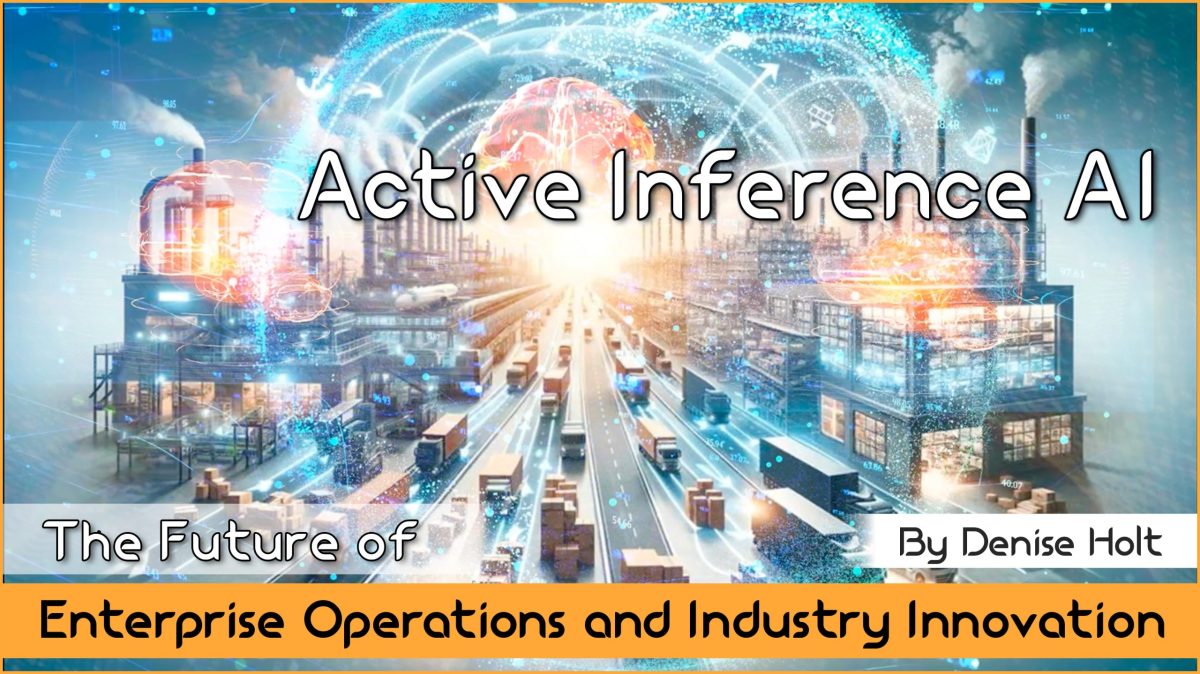
The convergence of two groundbreaking technologies is reshaping how we think about AI, automation, and intelligent systems, affecting every industry...

The World vs. Words
In a world where AI reigns supreme, there is a question looming among the tech elite: Are we on the cusp of true intelligence, or are we merely toying with sophisticated text generators? As we marvel at the prowess of Large Language Models (LLMs) like ChatGPT, Claude, and others, it’s time to investigate a bit further and seek answers. Beyond the hype and fascination, lies a catalyst for change and remarkable innovation, fundamentally redefining what AI means: Active Inference AI.
What sets these two approaches apart, and why might Active Inference hold the keys to AI’s future? Join me on a voyage through the complexity of these groundbreaking technologies, as we eliminate confusion, and reveal a path that leads to more than just enlightened conversation — it leads to a new era of AI built on the very foundations of human intelligence.
The rise of Large Language Models (LLMs) like OpenAI’s ChatGPT, has stirred endless excitement and curiosity about the capabilities of Artificial Intelligence. These systems have the remarkable ability to generate human-like text and engage in diverse conversations, fueling expectations for AI’s future. However, as impressive as LLMs are, they have inherent limitations when compared to this new revolutionary approach to artificial intelligence known as Active Inference. Let’s dive into the fundamental differences between LLMs and Active Inference and why the latter is positioned to emerge as a vanguard of the future of AI.
LLMs are powered by deep learning on massive datasets, allowing them to recognize linguistic patterns attuned to various subject matter and generate outputs that seem coherent. However, this statistical pattern matching does not equate to true intelligence or understanding of the world. LLMs fall short in several critical aspects:
1. Contextual Awareness: LLMs lack the ability to actively perceive or reason about real-world situations as they unfold. Their operation solely depends on the data they were trained on, devoid of real-time sensory input.
2. Explainability: Understanding the decision-making processes of LLMs is an elusive challenge. Their outputs are essentially probabilistic guesses, even if fluently phrased.
3. Grounding in Reality: They hallucinate or fabricate responses outside their training distribution, unconstrained by real world knowledge, blurring the line between fact and fabrication.
4. Ability to Take Action — LLMs cannot act on their environment or test hypotheses through exploring the world. They are passive systems.
These deficiencies make LLMs poorly suited for most real-world applications, especially those requiring nuanced situational understanding or the ability to operate autonomously in dynamic physical environments. Their strengths lie more in generating content, ideas, and prose based on recognizing patterns in immense datasets.
In fact, a recent paper by Google provides evidence that transformers (GPT, etc) are unable to generalize beyond their training data. “We find strong evidence that the model can perform model selection among pre-trained function classes during in-context learning at a little extra statistical cost, but limited evidence that the models’ in-context learning behavior is capable of generalizing beyond their pre-training data.”
Active Inference, based on the Free Energy Principle developed by Dr. Karl J. Friston, world reknowned neuroscientist and Chief Scientist at VERSES AI, represents a paradigm shift in AI.
Active Inference AI is modeled after how the human brain and biological systems work. Through this method, an Intelligent Agent is able to continuously sense its environment, take action in real-time based on that sensory input, and update its internal model of the world — just like humans do. This sets it apart from other AI approaches that are static and cannot adapt and evolve in real-time.
Active Inference has the capability to start off at a basic level and rapidly evolve in intelligence over time, similar to how a human child develops. This positions it to continuously improve and adapt as it accumulates more experiences and knowledge, making it far more advanced than current AI.
Active Inference also possesses two unique capabilities. Human laws and guidelines can be programmed into these systems, and they will abide by them in real-time, and these autonomous systems are also capable of introspection. They can report on their own processing and decisions, making them completely auditable. This gives them an unparalleled advantage in being able to grow and evolve in collaboration and cooperation alongside humans.
In contrast to deep learning, active inference is founded on principles of embodied cognition and Bayesian inference, delivering several key attributes:
> Sensory Integration and Real-Time Interaction: Active inference AI mimics human abilities to sense, perceive, and interact with the world in real time. It can see, hear, touch, and respond to environmental stimuli, similar to human sensory processing.
> World Modeling and Decision Making: This AI continuously updates its world model, akin to how humans learn and adapt. This evolving understanding allows it to engage in complex decision-making and problem-solving tasks.
> Planetary Management and Support: Active inference AI’s capabilities extend to managing large-scale systems like climate, biodiversity, and energy flows. It is envisioned to support and protect every individual and living entity on the planet, much like a global caretaker.
> Adaptability and Evolution: Unlike traditional AI, Active Inference AI evolves continually. It’s self-evolving, self-organizing, and self-optimizing, aligning with the concept of autopoiesis — a system capable of reproducing and maintaining itself.
> Comprehensive Application Spectrum: The AI’s capability extends far beyond current AI applications. It can address real-time updating and adaptable scenarios, making it ideal for complex tasks like running supply chains or smart cities.
> Holistic Integration: The technology is seen as bringing the planet to life, integrating the digital and physical worlds, and transforming the planet into a ‘digital organism’. This holistic approach signifies a major leap in AI capabilities.
· Perpetual Learning: Active inference agents continually update their beliefs by interacting with the world in real-time, integrating new observations into their internal model of how the world works.
· Contextual Awareness: By gathering multisensory input, agents build a dynamic understanding of unfolding situations, enabling complex reasoning and planning.
· Embodiment: Agents learn faster and perform better when they are embodied in simulated or physical forms, allowing them to test hypotheses through action.
· Explainability: An agent’s beliefs, desires, and decision-making processes are transparent and grounded in its observations and prior knowledge.
· Flexible Cognition: Active Inference agents can seamlessly transfer knowledge across diverse contexts and challenges, similar to human adaptability.
These attributes make Active Inference a groundbreaking approach to AI, but what takes it beyond the horizon is the integration with the universal network of the Spatial Web.
Active Inference’s potential is amplified when it converges with the Spatial Web Protocol, HSTP (Hyperspace Transaction Protocol) and HSML (Hyperspace Modeling Language). This convergence unleashes a distributed form of Active Inference and fosters collective intelligence among multitudes of Intelligent Agents.
At the core of this integration is HSTP, the Hyperspace Transaction Protocol, serving as the digital nervous system. It enables seamless communication and data exchange among various technologies, sensors, machines, and Intelligent Agents, unifying them on a common network, creating a dynamic, real-time ecosystem. HSTP captures real-time data from multiple sources, forging a comprehensive contextual understanding of any given situation, much like the human nervous system.
HSML, the Hyperspace Modeling Language, plays a pivotal role in this orchestration. It’s not just a language; it’s the bridge between diverse technologies and agents in the Spatial Web. By programming context into the digital twin spaces of every element in the world, HSML creates a unifying layer that resonates across the entire network. HSML acts as the translator in a multilingual conversation, ensuring every technology, sensor, machine, and Intelligent Agent can comprehend and communicate effectively.
This ingenious amalgamation of Active Inference with HSTP and HSML gives birth to a comprehensive “world model,” providing an evolutionary pathway to AGI and beyond. This world model is not a static representation; it’s a living, breathing entity that continuously adapts and evolves in real time. It’s the digital twin of the real world, reflecting the ever-changing dynamics, interactions, and complexities of the environment it models. With HSTP and HSML, the world model acquires a depth of understanding that transcends the capabilities of traditional AI models. It gains the ability to perceive, reason, and adapt to real-time events with unparalleled accuracy. It becomes the foundation for all perception, decision-making, and action within the AI system.
In essence, smart cities will function like a digital organism, paralleling the human body’s brain and nervous system. They utilize a dynamic, holographic world model, constantly updated by real-time sensor data, analogous to sensory neurons. This model represents various aspects of the city, climate, or other environments and is linked to the Internet of Things (IoT), which includes drones, robots, and automated systems. These elements act like motor neurons, executing changes in the physical world. The sensory network then updates the world model based on these changes, creating a feedback loop.
This process depicts the evolution of intelligence, where the system continuously refines its understanding and interaction with the world, reducing surprises through accurate inferences from the current world model. The Free Energy Principle provides the mathematical framework for this evolutionary process. While Natural Selection explains the evolution of physical bodies in animals, the evolution of world models can be considered a branch of Memetics — similar to Genetics — but not biologically based. The Free Energy Principle provides us with the Mathematics of Evolution of Intelligence in these complex, interconnected systems.
The explainability of Active Inference AI (the ability of self-introspection and self-reporting) coupled with the use of HSML, where human laws can be made programmable, enabling AI to understand and comply with them in real-time, offers a solution where the development and implementation of trustworthy and governable AI systems prevail.
In July 2023, VERSES AI, along with Dentons Law Firm, and the Spatial Web Foundation, published a groundbreaking industry report titled, The Future of Global AI Governance, establishing frameworks for ethical, robust, and lawful AI. These frameworks refer to successful proofs of concept using Active Inference AI and the Spatial Web Protocol — HSTP and HSML — demonstrating remarkable success in programming AI to comply with human laws, integrating various AIs into a larger, governable network. This report afirms the importance of regulation standards and proposes categorizing AI into different levels of intelligence and capabilities for appropriate governance methods. The overarching theme is to use these technologies to govern the autonomous systems themselves to ensure responsible and effective governance of AI for safety, privacy, and ethical use.
The act of correcting a machine occurs within the code, and through these technological breakthroughs, VERSES has developed a way to do that.
The distinct capabilities of Active Inference find applications across a myriad of domains where situational awareness, adaptability, and autonomy are paramount:
· Robotics: Enabling control of autonomous robots and vehicles operating in dynamic real-world environments, from factories to homes and automobiles to drones.
· Logistics: Optimizing delivery drones and coordinating swarms for safe and efficient navigation.
· Healthcare: Personalized care through smart beds, wearables, and assistive robots for patient monitoring.
· Smart Cities: Managing critical systems, including hospitals, airports, supply chains, traffic flows, public services, and infrastructure, through distributed networks.
· Finance: Detecting fraud, risk, and anomalies in transactions in real-time.
· Scientific Discovery: Streamlining processes such as materials development, drug discovery, and particle physics.
In contrast to current LLMs, which remain narrow, passive, and bound by static training data, Active Inference represents a developmental approach to AI, characterized by embodiment, context, and dynamism. While LLMs excel in content creation, Active Inference holds the next evolution of AI that can grapple with the complexities of the real world. As the development of this technology matures, it promises to revolutionize AI integration across domains, from robotics to finance and scientific discovery.
In the realm of AI, where understanding, perception, and adaptability are paramount, the convergence of Active Inference with the Spatial Web Protocol — HSTP and HSML, is the catalyst of transformation. It ushers in a new era where AI transcends boundaries and limitations, where it possesses the contextual world model essential for true intelligence and the cultivation and expansion of universal knowledge.
Large Language Models have captured the imagination of the public regarding AI’s potential, but they face significant limitations compared to the emerging implementation of Active Inference. Active Inference’s continuous interaction and learning model lead to more flexible, context-aware intelligence. Active Inference agents excel at understanding nuanced situations, adapting to new environments, and operating autonomously in the real world. While LLMs are ideal for content generation, Active Inference paves the way for AI to navigate the complexities of real-world challenges. As this new paradigm advances, it will drive innovation and automation across an array of fields, transforming the landscape of AI applications.
VERSES is fundamentally redefining what AI means, moving towards a model that’s more akin to natural intelligence. They are the only company pursuing Active Inference AI based on the pioneering work of Professor Karl Friston — VERSES’ Chief Scientist. This gives VERSES a huge competitive edge, as Active Inference allows for true embodied AI that can power general intelligence across countless applications. No other approach comes close to the flexibility and advancement of Active Inference.
By being self-evolving, self-organizing and autopoietic (self-generating), Active Inference AI will grow rapidly in capabilities and use cases. Over time, it is expected to surpass the abilities of current AI like LLMs, and enable new applications not possible today. This has the potential to bring about major breakthroughs in AI and allow VERSES to establish itself as a leader.
The company’s strategy mirrors significant technological shifts in history, such as the transition from Blackberry to iPhone. The development and adoption of Active Inference AI represents a paradigm shift in AI, capable of unlocking new possibilities for AI to positively impact humanity, with applications ranging from digital assistants to smart city infrastructure optimization and beyond. This positions VERSES at the forefront of the next era of AI advancement.
This new framework, spearheaded by VERSES AI, opens the door to a future where AI seamlessly integrates into our lives and society, guiding us through the complexities of the real world with finesse and precision, able to handle mission critical operations, with the potential to assist in large scale planetary and humanitarian crises. The union of Active Inference and the Spatial Web isn’t just about AI evolution; it’s about revolutionizing the way we interact with technology and the world around us. It’s a paradigm shift that promises to transform AI from a tool into a true companion in our complex, ever-changing world.
Check out my blog and tune into my podcast, Spatial Web AI to learn about Active Inference AI, the Free Energy Principle, and the Spatial Web, where I strive to take these complex topics and make them easy to understand.
Learn more about advancements with the Spatial Web at spatialwebfoundation.org.
Visit VERSES.AI to stay up to date with Genius™ and Dr. Karl Friston’s revolutionary work with VERSES in the field of Active Inference AI and the Free Energy Principle.
All content for Spatial Web AI is independently created by me, Denise Holt.
Empower me to continue producing the content you love, as we expand our shared knowledge together. Become part of this movement, and join my Substack Community for early and behind the scenes access to the most cutting edge AI news and information.

The convergence of two groundbreaking technologies is reshaping how we think about AI, automation, and intelligent systems, affecting every industry...

On 29 May 2025, the IEEE Standards Board cast the final vote that transformed P2874 into the official IEEE 2874–2025...

Explore the future of agent communication protocols like MCP, ACP, A2A, and ANP in the age of the Spatial Web...

Fusing neurons with silicon chips might sound like science fiction, but for Cortical Labs, it represents what's possible in AI...

Ten years ago, on March 31, 2015, I interviewed Katryna Dow, CEO and Founder of Meeco, to discuss an emerging...

We stand at a critical juncture in AI that few truly understand. LLMs can automate tasks but lack true agency....

VERSES AI 's New Genius™ Platform Delivers Far More Performance than Open AI's Most Advanced Model at a Fraction of...

Go behind the scenes of Genius —with probabilistic models, explainable and self-organizing AI, able to reason, plan and adapt under...

By understanding and adopting Active Inference AI, enterprises can overcome the limitations of deep learning models, unlocking smarter, more responsive,...